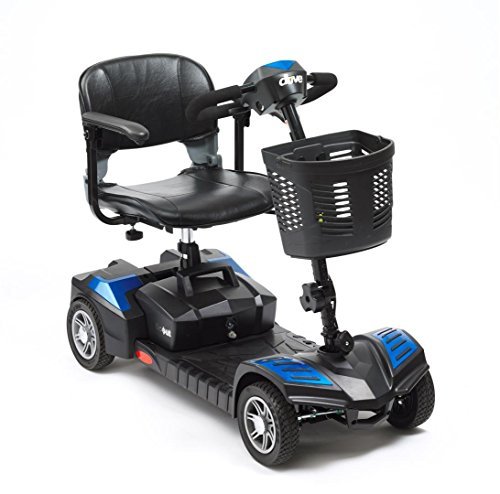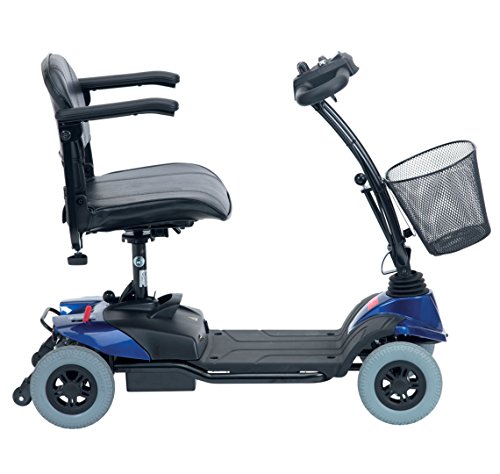See What Mobility Scooters On Road Or Pavement Tricks The Celebs Are M…
페이지 정보
작성자Fran 댓글댓글 0건 조회조회 39회 작성일 25-04-12 06:19본문
 Using mobility scooters on road or pavement - sneak a peek at this web-site -
Using mobility scooters on road or pavement - sneak a peek at this web-site -No driver's license is required to operate mobility scooters. Users should be aware that mobility scooters travel much slower than motor vehicles, and their eyesight is affected.
Go through the manual of your scooter to determine the recommended height. Be careful when crossing roads or around corners.
Road or Pavement
Mobility scooters have developed to meet a variety of requirements and capabilities as they have become more popular. This has meant that more people are opting to buy these vehicles to assist with their daily activities and enable them to travel farther than their smaller Travel Scooters cannot manage.
Depending on the location you live in, there could be laws specific to your area concerning the use of mobility scooters on pavements and roads. To ensure the safety of you as well as other road users and pedestrians, it is essential to follow these rules. It is also recommended to consider taking out mobility scooter insurance for extra peace of mind in the event you are involved in an accident or mechanical breakdown.
When you travel on the roads on a mobility scooter, it is important to observe the Highway Code. This means that pedestrians have the right of way, not driving directly over or around them, and indicating your direction before changing, and using both your lights and horn in a safe way. You should also never drive your scooter in a bus lane, cycle lane, lanes, or any other designated bike lane. These are only suitable for bicycles. It is also not advisable to drive your mobility scooter onto dual carriageways since this could be extremely hazardous for the driver and you.
It is vital to recognize that mobility scooter on pavement scooters aren't a motorbike and doesn't operate at the same speed. This means that it is unable to keep up with traffic and should always be operated at a speed not higher than 4 mph mobility scooter mph on the road.
Mobility scooters should not be used in stores or shopping malls because they aren't designed to accommodate them and could cause injury to you or other shoppers. In fact, many malls have a separate entrance for scooters and wheelchairs to make it easier for shoppers to navigate their way through the storefronts.
It's not required to insure your scooter, but it is highly recommended. You will be able to rest assured when you're involved in an accident or a mechanical failure. You can select an insurance policy that only covers damages, or one which includes both repair and loss cover.
Sidewalk
While mobility scooters are intended to be operated on roads but they should not be used on sidewalks or pedestrian paths. This is because they are much wider than a bicycle and can create a challenge for pedestrians who are walking in the same direction. A mobility scooter on pavement scooter could also strike pedestrians, especially when the pedestrian is carrying a bag or shopping.
In addition, sidewalks often have obstacles that can make it difficult for mobility scooters to maneuver through, such as benches, curbs garbage cans, curbs and even plants. These obstacles can easily cause a trip up or damage a scooter. This could lead to an accident, which can result in injury or even death for the driver or anyone else on board.
In general, there's no a definitive answer to whether mobility scooters are permitted on sidewalks. However, it is essential to verify local laws and regulations. Many jurisdictions define mobility scooters pavement scooters as personal assistive mobility devices. They define specific guidelines regarding their use, including guidelines for sidewalk navigation and equipment standards. It is also recommended that scooter riders wear helmets while operating their mobility devices and adhere to all traffic laws.
Scooter owners are advised to not drive their vehicles in bicycle lanes or roads since they were not intended for this purpose. Additionally it is essential to be extra careful when driving on and off kerbs, as these can cause your scooter to flip. If you are unsure about how to approach a dropped kerb it is always recommended to refer to the manual of the manufacturer for guidance.
Based on the model of your scooter, you may be allowed to ride it in public buses with disabled access. You will require a permit and have completed the necessary training. It is also advisable to pick a smaller scooter for shopping, since they are more suitable for shopping. Shops usually have a lower speed limit for pedestrians, so it is a good idea to adhere to this when you're inside.
Pedestrian Areas
Many people are unsure about where they are able to use their mobility scooter and the rules and rules that govern responsible use. This blog post will help clarify common questions surrounding the use of these vehicles in public spaces.
The majority of municipalities consider scooters to be wheelchairs, and their riders are referred to as pedestrians. This means that they are allowed to travel wherever pedestrians can go, including in shopping malls and on footpaths. However, there are exceptions to this rule and users must always be familiar with local laws and guidelines.
If you are a scooter rider who often travels along sidewalks or other pedestrian zones it is essential to be aware of the speed limit that applies to these areas. Most cities set the speed for scooters in pedestrian areas at a speed which is comparable to a fast walk, which ensures the safety and security of pedestrians who may be using the area.
It is also essential to give pedestrians plenty of notice before making any manoeuvres or turning on the sidewalk, or in any other areas that are solely for pedestrians. If it is necessary, it is an excellent idea to make use of hazard lighting to warn pedestrians of your presence. This is especially true when driving at slow speeds.
Avoid crossing roads while riding your scooter unless it is absolutely necessary. This could be extremely risky. If you must traverse a road on your scooter, it's best pavement mobility scooter to do so at a pedestrian crossing or through an intersection with appropriate signs. It is recommended to wear a helmet as often as possible, particularly when riding on streets and in busy pedestrian areas.
In the end, it is recommended to get your scooter out only after you have become comfortable with operating it on sidewalks and other pedestrian-only areas. Once you are comfortable with the basics of driving your vehicle, it is time to venture onto the road. This is to prevent injuries and accidents that result from unfamiliarity with the controls or misjudgment of your surroundings. It is also crucial to remember not to operate your mobility scooter while under the influence.
Crossings
Mobility scooters are a reliable and safe solution for people who are unable to walk that allows them to move around public spaces easily. It is important for users to be aware of the laws that govern their locale and follow proper road and pavement manners when using their scooters. This includes observing speed limits and not obstructing pedestrians or scooter users.
While mobility scooters can be operated on roads, it is important to remember that they aren't designed to operate at high speeds, and they are not able to keep up with traffic. They also do not offer any protection against the elements and may pose a threat to other drivers in bad weather. Therefore, it is not advisable to operate an electric scooter on the road without ensuring that it has the proper safety features and is registered with the appropriate authorities.
In addition to adhering to the rules of the road and pavement, there are other aspects that should be considered when operating a scooter safely. It is essential to wear a helmet when riding a scooter, and to make use of reflective equipment. Also, ensure that your scooter has rear-view mirrors, as well as an audible warning system, such as an horn or bell, to ensure that other road users and pedestrians recognize you.
Mobility scooter riders should be careful when crossing the road. This involves looking both ways before proceeding, taking care around blind corners, and avoiding distractions such as mobile phone use or headphones. It's also an excellent idea to utilize dropped kerbs as often as you can as they are beneficial for those with limited mobility or balance.
 It's also a good idea to check whether your area has bus lanes or bike lanes. It's a good idea, when they're available, to take advantage of them. They provide the most convenient and secure method of getting around busy areas. On the other hand it's a good idea to stay clear of operating your scooter on motorways or in designated "cycle-only areas as they could be dangerous for both you and other road users.
It's also a good idea to check whether your area has bus lanes or bike lanes. It's a good idea, when they're available, to take advantage of them. They provide the most convenient and secure method of getting around busy areas. On the other hand it's a good idea to stay clear of operating your scooter on motorways or in designated "cycle-only areas as they could be dangerous for both you and other road users.댓글목록
등록된 댓글이 없습니다.

